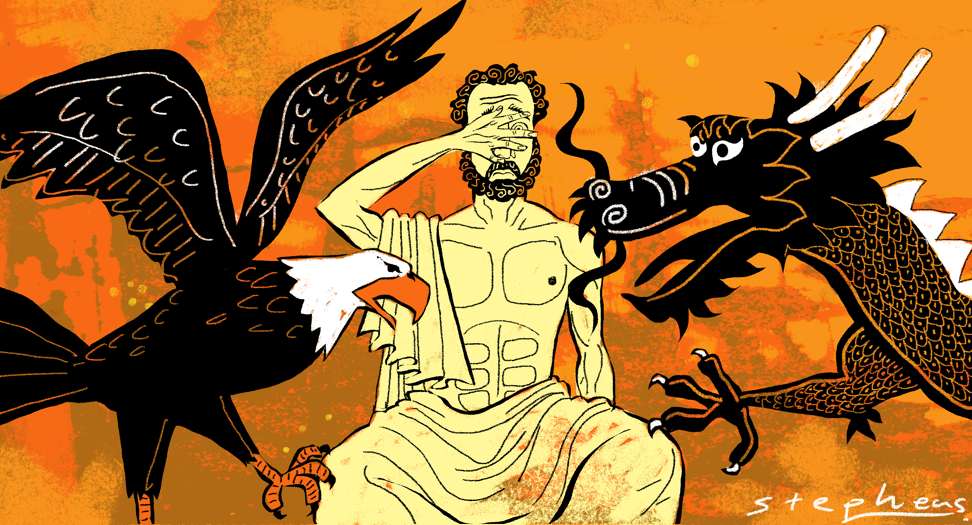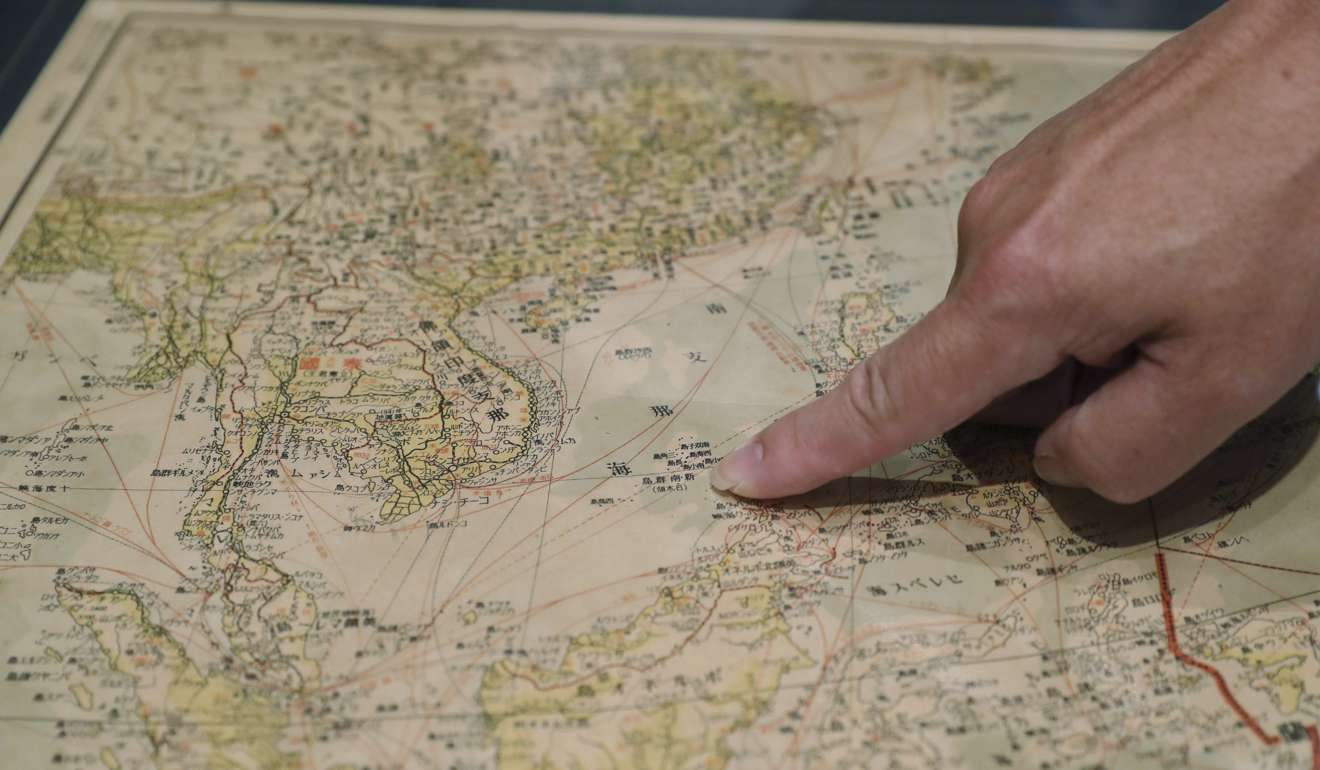
In the Trump era, we can’t rule out war between China and the US, whether over trade or security
Deng Yuwen says direct conflict is possible between the two powers – with their vastly different models – when distrust runs so deep. A Trump presidency may well send the two tumbling into a Thucydides trap

In a short space of time, Trump has shown the world his way of working. In terms of political integrity, he is fulfilling his campaign promises. But the world is watching in alarm because, as foreign policy, those promises are rather terrifying. Trump has yet to turn his various complaints about China into actual policy, but this only puts the world on edge. Any strike by America, whether to launch a trade war or in an act of strategic provocation, is likely to be fierce. And Beijing is bound to fight back hard.
Why the world has reason to fear Donald Trump’s trade tantrums

‘China doesn’t want to be the new America’: why Trump needn’t clash with Beijing
Fu Ying (傅瑩), a Chinese diplomat familiar with Western thinking, wrote last year that she believed friction between the two countries and America’s ramped-up efforts to “contain” China in recent years stemmed from America’s disappointment with China in three areas. First, China’s modernisation did not bring about political reform, as the US expected. A “Chinese Gorbachev” did not appear; instead, China’s success and enhanced confidence have made its development pathway less reversible. Second, after being integrated into the global system, China did not succumb to US will or base its decisions on US interests; on the contrary, it became active in trying to shape international and regional affairs. Third, China has entered the most challenging phase of its economic reform, and the US companies with a stake in its market have had to adjust to sharply falling profits, and some are complaining. Fu’s analysis sums up the essence of China-US ties.
Their contradictions are seen in three areas: geopolitics (strategy), the economy and ideology. In geopolitics, the two are out-and-out rivals, and the Diaoyu Islands, Taiwan and the South China Sea form the core of the confrontation. On the South China Sea, for example, many people believe it is part of China’s core interests, but not America’s. But this is wrong; the South China Sea is also a US core interest, since America has many allies in this region. It is necessary for the US to keep its security promises to allies, because that concerns its credibility as a superpower. Allies will see a failure to keep its promises as a sign of US hegemony in decline.

With hawkish Navarro as US trade tsar, it is up to China to show diplomatic restraint
In the economic sphere, there are old disputes (the renminbi exchange rate) and new ones (two-way investment). In his book, Crippled America: How to Make America Great Again, Trump described China as an enemy of the US, accusing Beijing of undermining American manufacturing, engaging in commercial espionage and stealing US jobs. Nonetheless, the real conflict is reflected in the competition over economic size. China’s economy is expected to surpass America’s in 10 to 15 years. The significance of this looming feat cannot be overemphasised. Once its economy becomes the largest in the world, China, with its huge geographic size and large population, will have no trouble developing its military and other strengths rapidly. That worries China’s neighbours and the US, even though it hates to admit it.
In China’s view, it has never tried to export its ideology, while the US has never given up its attempts to mould China in its own likeness
With regard to ideology and political systems, the contradictions are even more fundamental. China’s one-party ruling system and the US model of democracy are inherently incompatible. After more than 30 years of reform, China has become a capitalist society, but it does not want democracy, and has not implemented political reform in accordance with the script written by the US. On the contrary, the new leadership has further tightened its grip on the political system. Moreover, China’s wealth and resources are vast enough to make it a threatening Leviathan to the free world. In China’s view, it has never tried to export its ideology, while the US has never given up its attempts to mould China in its own likeness, and has sought every opportunity to launch a “colour revolution” in China. The confrontations on this front have never stopped, and are now intensifying.
Today, the US worries that China’s rise could change the status quo, and bring about the rise of a non-Christian civilisation. In his book The Clash of Civilizations and the Remaking of World Order, the late political scientist Samuel Huntington even envisaged that the Confucian civilisation and Islamic civilisation would one day work together to challenge the Western Christian civilisation.
This theory of a clash of civilisations is widely reflected in the thinking of US academics and strategists, who believe that China’s rise will challenge US hegemony. Inheriting Huntington’s world view, Bannon has described China and Islam as two major threats to the US and Christianity.
Will Trump force Asia to choose China?
The contradictions in the three areas outlined above could be said to come down to this more fundamental clash. What worries the US most is that China, now an economic powerhouse, could aggressively promote its development model. In America’s view, the China model succeeds only by great force and at the expense of human rights. Yet the financial crisis in Europe and the US has made China’s model more appealing. Some in the US fear China may mistakenly believe America is no longer powerful enough to constrain it. And if others favour China’s development model, this will mean they see the US in decline, something America could not tolerate.

China can best answer Trump’s trade threats by improving its own economy
Chinese scholar Shi Yinhong (时殷弘) has offered four possible scenarios for the future of Sino-US relations. First, China undertakes a historic contraction, thus averting a clash. Second, the US and China gain equal power in the Pacific, and Washington recognises Beijing’s strategic advantage in the western area. Third, the two sides enter a cold war or quasi cold war. Fourth, they engage in direct confrontation. Shi believes the first two scenarios are peaceful and will not result in the two falling into the Thucydides trap. The best outcome can be achieved if the US recognises China’s strategic interests. Thus, he thinks only the second option favours China.
However, judging from the current situation, China and the US are in the third scenario, and the possibility of the fourth – direct confrontation – cannot be ruled out in the next few years.
Deng Yuwen is a researcher at the Charhar Institute think tank

